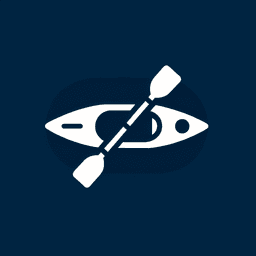
Kayaking: Definition, Techniques, and Essential Gear
February 27, 2025
Kayaking
Kayaking is a popular water sport that involves paddling a small, narrow watercraft known as a kayak. This activity is enjoyed by enthusiasts for both recreational and competitive purposes. Kayaks are typically propelled using a double-bladed paddle, allowing for efficient movement through water.
Types of Kayaks
There are several types of kayaks, each designed for specific water conditions and activities:
- Sea Kayaks: These are designed for open water and ocean paddling. They are longer and more stable, making them suitable for long-distance travel and rough waters.
- Whitewater Kayaks: Shorter and more maneuverable, these kayaks are used in rivers and rapids, allowing for quick turns and agility.
- Recreational Kayaks: Ideal for calm waters such as lakes and slow-moving rivers, these kayaks are stable and easy to use, perfect for beginners.
Kayaking Techniques
Mastering kayaking techniques is essential for safety and efficiency:
- Paddling: The basic forward stroke involves dipping the paddle into the water and pulling it back alongside the kayak. Proper technique reduces fatigue and increases speed.
- Bracing: This technique helps prevent capsizing by using the paddle to stabilize the kayak in rough waters.
- Rolling: A skill used to right a capsized kayak without exiting it, crucial for whitewater and sea kayaking.
Safety Considerations
Safety is paramount in kayaking, especially in maritime environments:
- Always wear a personal flotation device (PFD).
- Check weather conditions and tides before setting out.
- Inform someone of your kayaking plan and expected return time.
- Carry a whistle or other signaling device for emergencies.
Environmental Impact
Kayakers should be mindful of their environmental impact, particularly in sensitive marine ecosystems:
- Avoid disturbing wildlife and marine habitats.
- Follow "Leave No Trace" principles to minimize environmental footprint.
- Participate in local conservation efforts to protect waterways.
Kayaking: A Maritime Perspective
Kayaking is a popular water activity that involves paddling a small, narrow watercraft known as a kayak. It is widely enjoyed for both recreational and competitive purposes. In a maritime context, kayaking offers unique opportunities to explore coastal environments, navigate through intricate waterways, and experience the ocean's vastness up close.
Benefits of Kayaking in Maritime Settings
Kayaking in maritime settings provides several benefits, including:
- Exploration: Kayaks allow access to areas that larger vessels cannot reach, such as narrow inlets, estuaries, and coastal caves.
- Environmental Connection: Paddlers can experience marine life and ecosystems firsthand, fostering a deeper appreciation for ocean conservation.
- Physical Fitness: Kayaking is an excellent full-body workout, enhancing cardiovascular health, strength, and flexibility.
Common Questions About Kayaking
What is the best type of kayak for ocean kayaking?
For ocean kayaking, a sea kayak is recommended. These kayaks are designed for stability and efficiency in open water, with features like a longer hull, a rudder or skeg for steering, and storage compartments for gear.
How do I stay safe while kayaking in the ocean?
Safety is paramount when kayaking in the ocean. Key safety tips include:
- Wearing a personal flotation device (PFD) at all times.
- Checking weather and tide conditions before heading out.
- Carrying a communication device, such as a VHF radio or a waterproof phone case.
- Informing someone onshore about your kayaking plan and expected return time.
Can kayaking be done in all weather conditions?
While kayaking can be enjoyed in various weather conditions, it is crucial to avoid extreme weather, such as storms or high winds, which can make paddling dangerous. Always check the forecast and plan accordingly.
What should I wear for kayaking in maritime environments?
Appropriate clothing for kayaking includes:
- Quick-drying, moisture-wicking layers to stay comfortable and dry.
- A wetsuit or drysuit in colder waters to prevent hypothermia.
- A hat and sunglasses for sun protection.
By understanding these aspects of kayaking, maritime enthusiasts can safely and enjoyably explore the wonders of the ocean.




